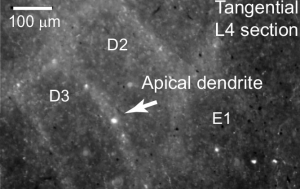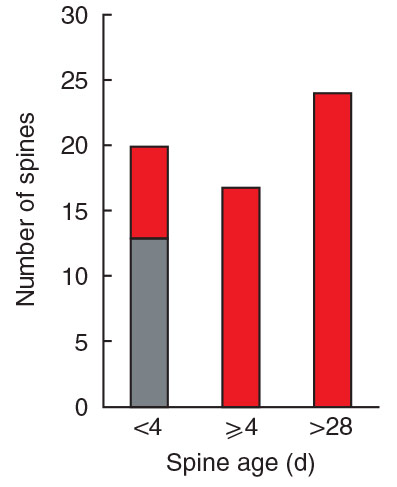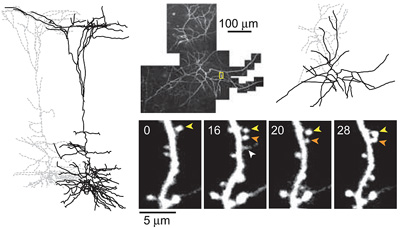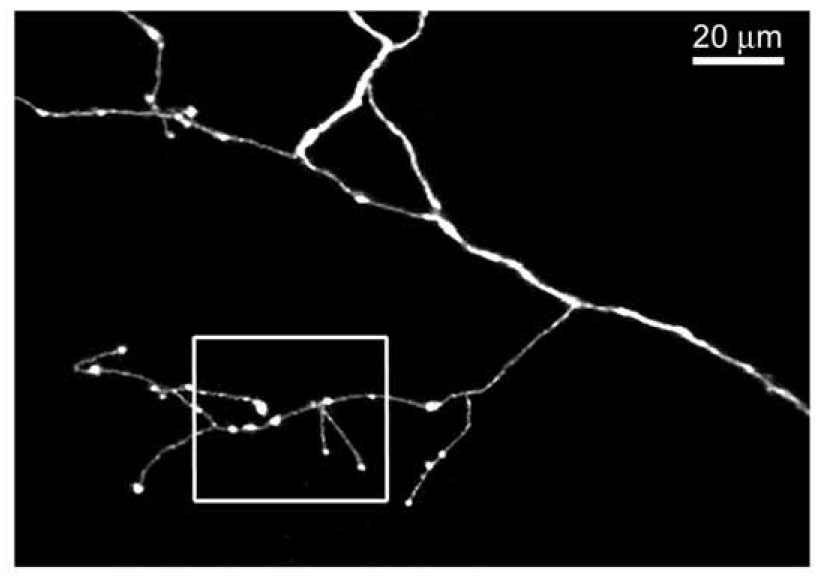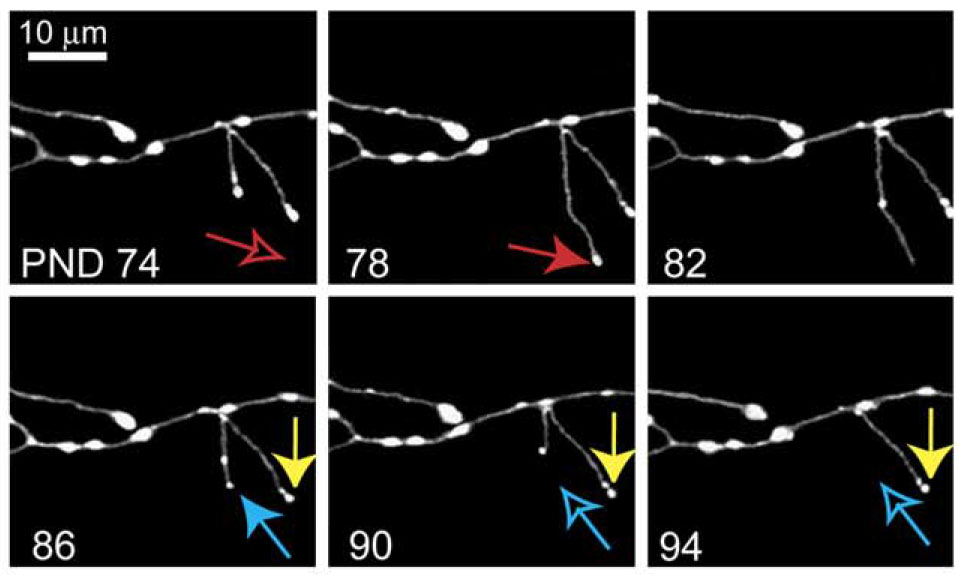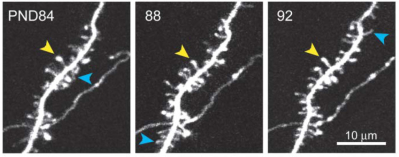Structural Plasticity Underlies Experience-Dependent Functional Plasticity of Cortical Circuits
The stabilization of new spines in the barrel cortex is enhanced after whisker trimming, but its relationship to experience-dependent plasticity is unclear. Here we show that in wild-type mice, whisker potentiation and spine stabilization are most pronounced for layer 5 neurons at the border between spared and deprived barrel columns. In homozygote αCaMKII-T286A mice, which lack experience-dependent potentiation of responses to spared whiskers, there is no increase in new spine stabilization at the border between barrel columns after whisker trimming. Our data provide a causal link between new spine synapses and plasticity of adult cortical circuits and suggest that αCaMKII autophosphorylation plays a role in the stabilization but not formation of new spines.
Wilbrecht L, Holtmaat A, Wright N, Fox K, Svoboda K. 2010. Structural plasticity supports experience-dependent functional plasticity of cortical circuits. The Journal of Neuroscience, 7 April 2010, 30(14): 4927-4932; doi: 10.1523/JNEUROSCI.6403-09.2010 (Full Text)
